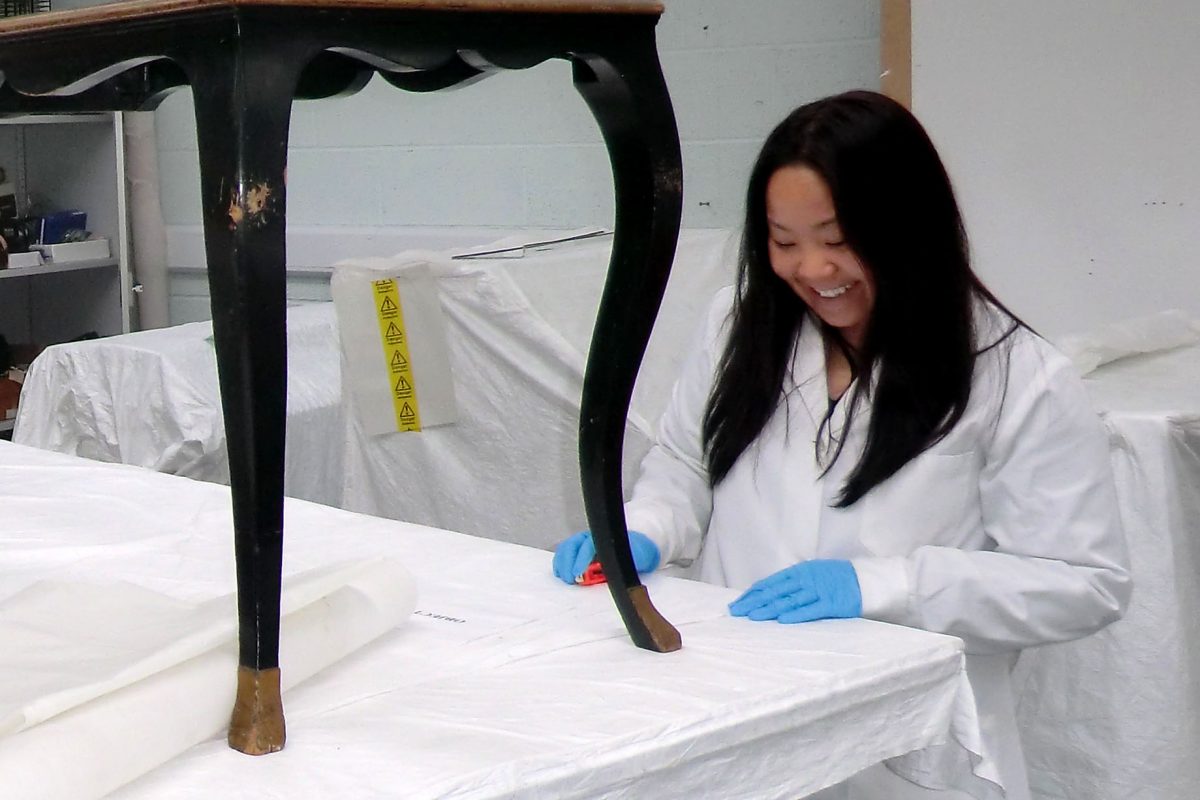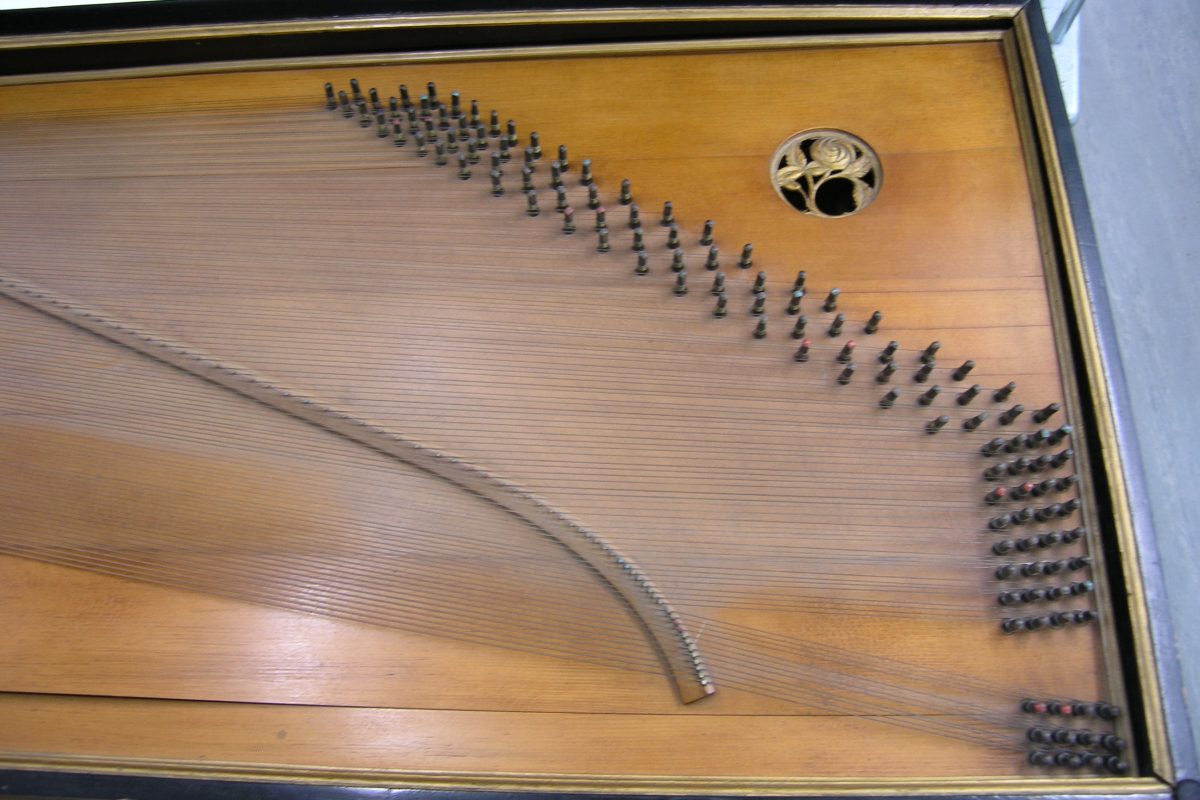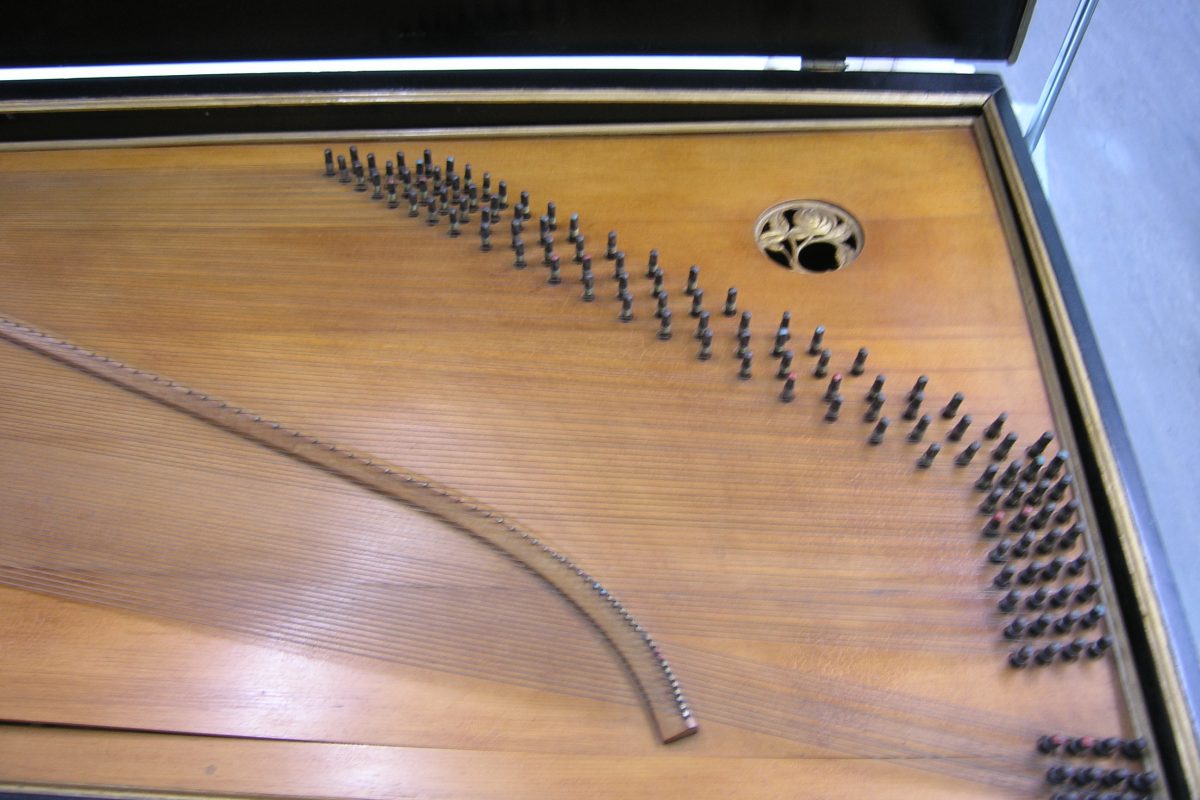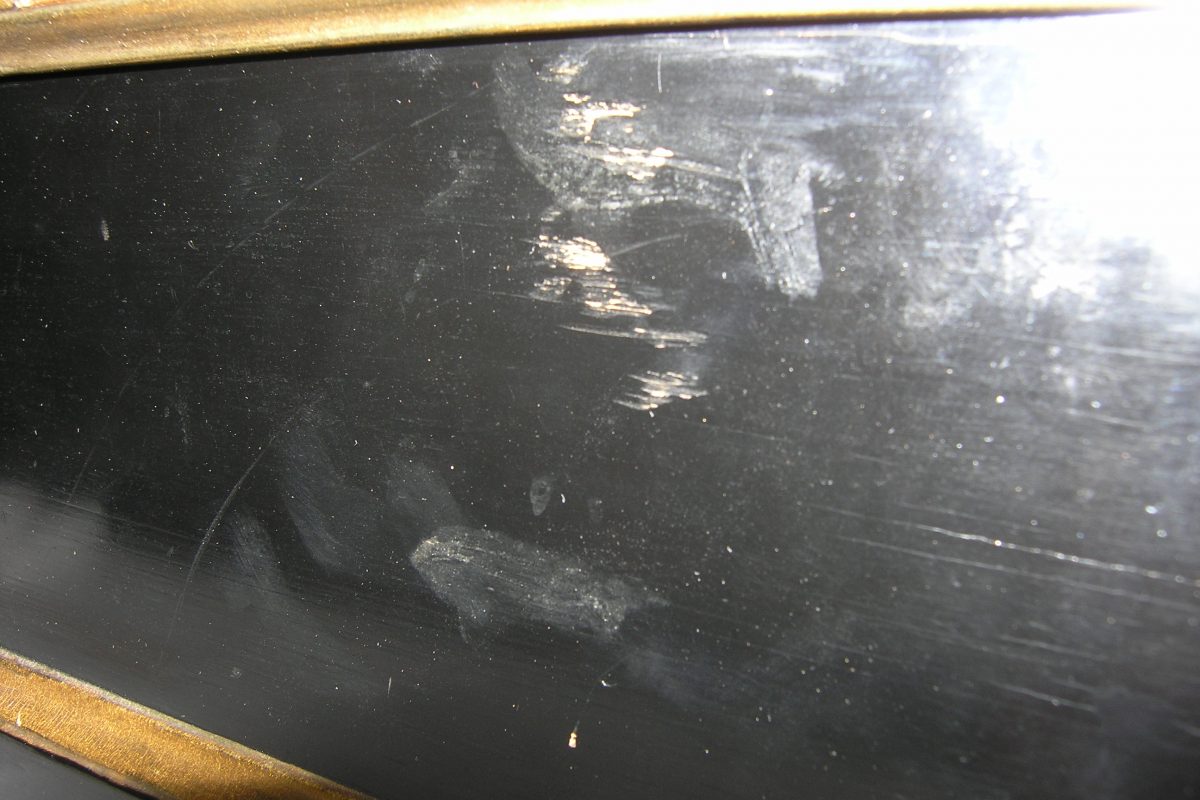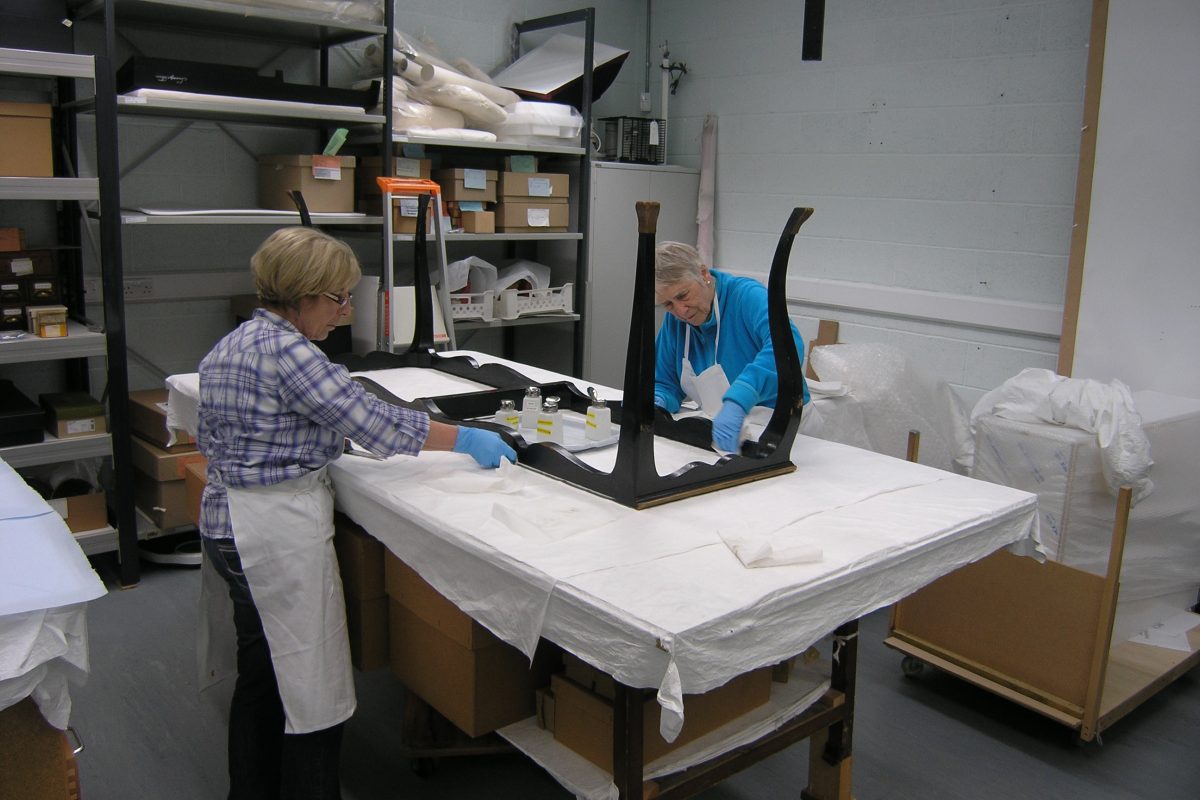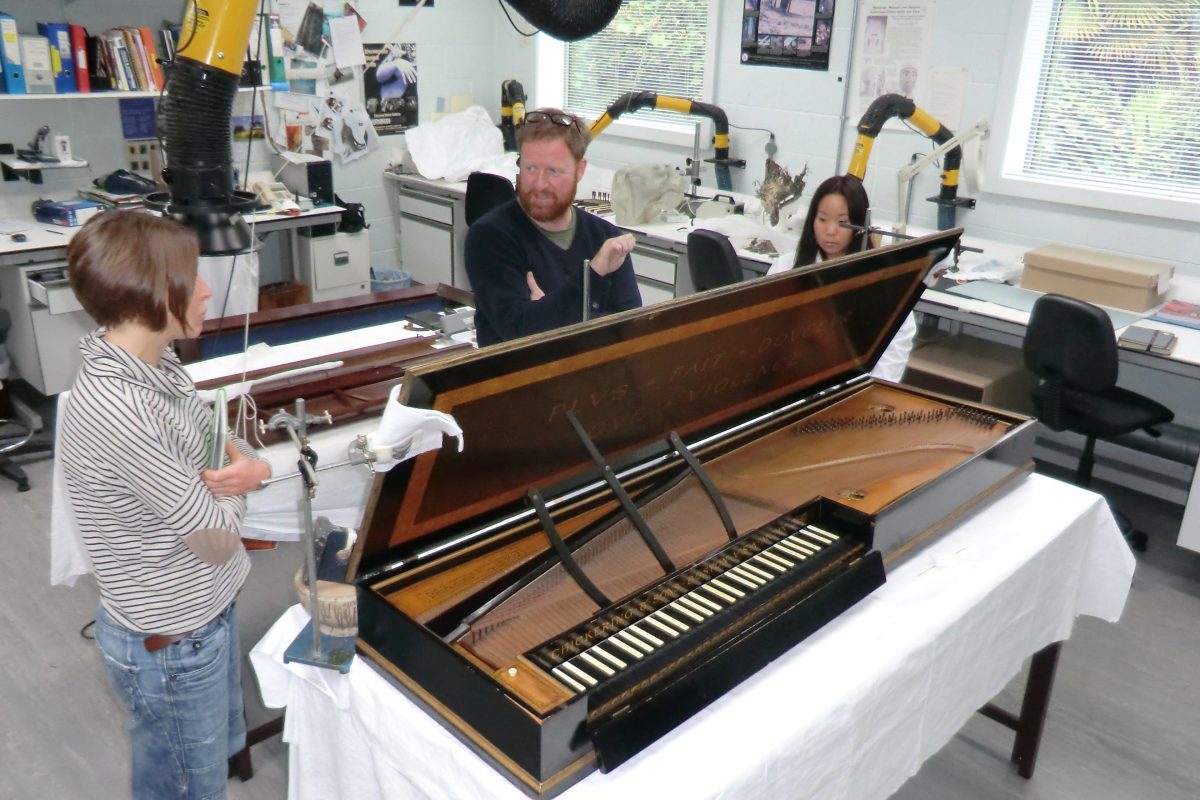I am a conservation student on placement from the University of Durham studying for my MA in the conservation of archaeological and museum objects.
For the new At Home with Music display, I have prepared a 1906-1910 clavichord made by Chickering of Boston, Massachusetts (Mus. No. 2013.352).
An overall inspection of the clavichord and its cabriole stand showed regular signs of use such as chipping of the edges, scratches and missing screws on the hinges. It was also very dusty on the inside particularly under the strings.
As a sign of its age and the uncontrolled variations of temperature and humidity during storage before the instrument came to the Horniman, the whole clavichord and stand displayed considerable warping of the wood.
After consultation with the Head of Department and the Deputy Keeper Musical Instruments, I decided that dry cleaning with a soft brush and a vacuum cleaner would be necessary for the inside of the clavichord while all outside surfaces would be cleaned with a simple solution of reverse osmosis water with a dash of conservation detergent to remove greasy finger marks and superficial dust.
In addition to the conservation of the clavichord itself, it was necessary to come up with a mount that would hold up the lid’s weight without straining the original hinges and at the same time holding up the lid at the appropriate angle so that the music stand could be displayed without danger of its top scratching the inside of the lid or taking the weight.
